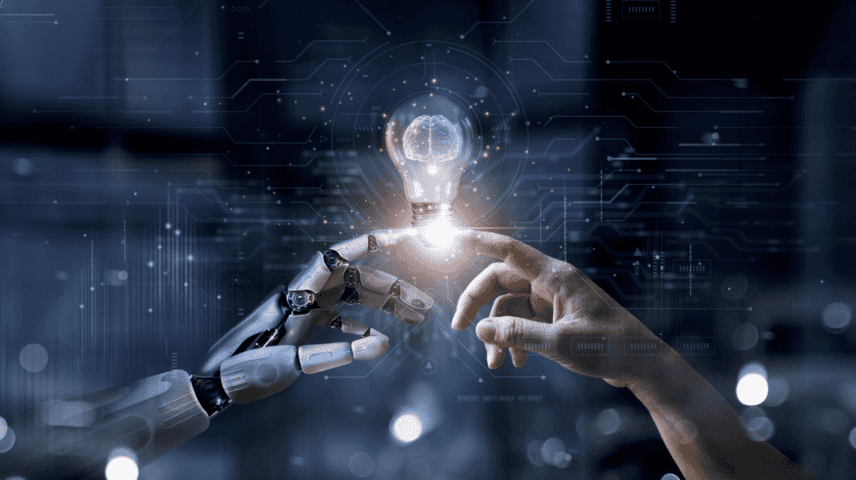Mastering Enterprise AI: How to Empower Your Organization to Work Better with AI
As technology continues to advance at an unprecedented pace, enterprises are going through a significant transformation. To stay ahead in this dynamic environment, IT leaders must be well-versed in the latest AI trends and focus on empowering their workforce to collaborate effectively with AI. In this post, we will explore key strategies and trends that enable IT leaders to master the integration of AI within their organizations. From fostering collaboration and maximizing productivity to achieving a human-centered approach, this post aims to empower individuals within your organization, equipping them with the knowledge to collaborate effectively with AI rather than perceiving it as a threat. By fostering a positive partnership between people and AI, you can unlock the full potential of both, enabling your team to work better together and achieve remarkable digital transformation outcomes.
“The true value of AI is not in the technology itself, but in the way we empower people to harness its power and potential.”
1. Fostering Human-AI Collaboration and Trust
Building trust and fostering collaboration between humans and AI systems is crucial as AI becomes more prevalent in enterprise environments. It is essential to create an environment where employees see AI as a valuable tool that complements their skills and expertise rather than a threat to their jobs. Organizations must cultivate a culture of trust and collaboration by ensuring transparency in AI systems, addressing ethical considerations, and involving employees in the AI development process.
2. Integrating AI into Workflows
One of the key aspects of working better with AI is integrating it seamlessly into existing workflows. IT leaders should focus on identifying areas where AI can augment human capabilities and automate repetitive tasks, allowing employees to concentrate on more strategic and creative work. By designing AI systems that align with the needs and preferences of end-users, organizations can maximize the benefits of AI and enhance overall productivity.
3. Enhancing AI Literacy
Employees need to develop a certain level of AI literacy to work with AI effectively. IT leaders should invest in training programs and resources that educate their workforce about AI concepts, their potential applications, and their limitations. By fostering AI literacy, organizations empower their employees to understand and leverage AI technologies, enabling them to collaborate with AI systems more effectively.
4. Responsible AI Governance
Responsible AI governance is paramount with the growing importance of AI in the enterprise. IT leaders should establish policies and frameworks to ensure that AI systems are developed and used ethically, comply with regulations, and address issues such as bias and fairness. By prioritizing responsible AI governance, organizations can build trust with stakeholders and mitigate potential risks associated with AI implementation.
5. Collaborating with AI Teams
To fully leverage the potential of AI, organizations are increasingly building dedicated AI teams and hiring AI talent. IT leaders should foster collaboration between these AI teams and other departments within the organization. By encouraging cross-functional collaboration, sharing knowledge, and fostering an inclusive environment, organizations can harness the collective expertise of their employees and AI teams to drive innovation and achieve business objectives.
AI Empowered, Human-Centered: Envisioning the Future of Work with AI
As AI continues to shape the future of work, it is essential for IT leaders to embrace a human-centered approach. Rather than replacing humans, AI should be seen as a tool that enhances human capabilities, enabling employees to tackle complex challenges, make better decisions, and drive innovation. By prioritizing the collaboration between humans and AI, organizations can create a work environment that leverages the strengths of both, leading to improved productivity, enhanced decision-making, and, ultimately, a more successful enterprise. As a result new new positions can be created, therefore we have a grooving demand for AI trainer work to be done.
A recent Microsoft whitepaper AI in Action mentions an example.
“The G&J Pepsi IT team uses AI Builder and Power Apps to create the next generation of our Store Audit App, enabling better mobility and efficiency for our field personnel. AI Builder will help build an AI model to automatically identify and track our products using object detection.
“For our field worker, it will be as simple as taking a photo and letting AI Builder do the rest.”
— Eric McKinney Enterprise Business Systems Manager, G&J Pepsi
In this dynamic landscape of enterprise AI, one noteworthy solution that stands out is Olive’s AI-powered platform for solution selection. Olive recognizes the importance of empowering people to make informed decisions and combines the strengths of AI with human expertise.
By utilizing Olive’s platform, IT leaders can streamline discovery, manage requirements, compare vendors, and make internal IT Decisions, 3x faster.
Olive Leverages AI and collaboration to ensures that decision-making is a combined effort, leveraging the power of AI alongside human insights.
By integrating Olive into their strategies, IT leaders can effectively navigate the ever-evolving enterprise AI landscape, achieving remarkable outcomes in the process.
The G&J Pepsi example exemplifies how organizations are leveraging AI technologies like AI Builder and Power Apps to enhance their operations. By automating tasks such as product identification and tracking through object detection, field workers can now capture photos and rely on AI to handle the rest, improving efficiency and productivity.
Similarly, Olive’s AI-powered platform offers IT leaders a valuable tool for solution selection.
By leveraging AI and collaboration, Olive streamlines the process of discovery, managing requirements, and comparing vendors, enabling faster decision-making. Olive’s approach combines the power of AI with human insights, ensuring that IT leaders can make informed decisions based on both technological capabilities and human expertise.
In this ever-evolving landscape of enterprise AI, organizations that prioritize collaboration between humans and AI, like G&J Pepsi and those utilizing Olive’s platform, are at the forefront of driving innovation and achieving remarkable outcomes. By embracing the potential of AI and leveraging the strengths of both humans and AI, businesses can navigate the future of work with confidence and reap the benefits of harmonious collaboration.





